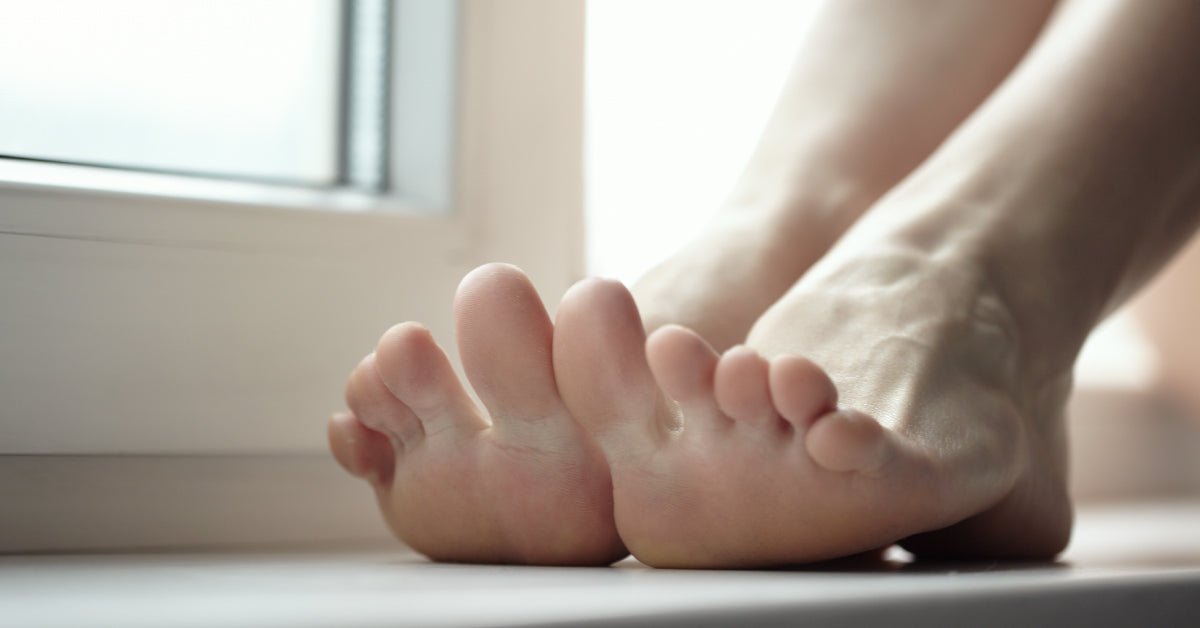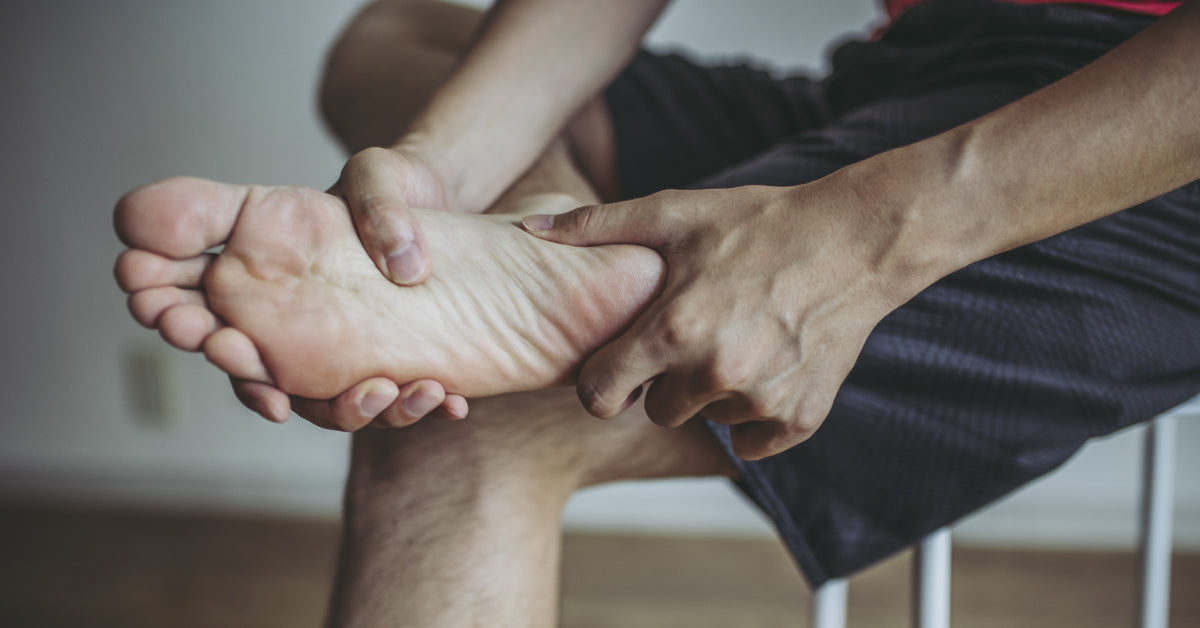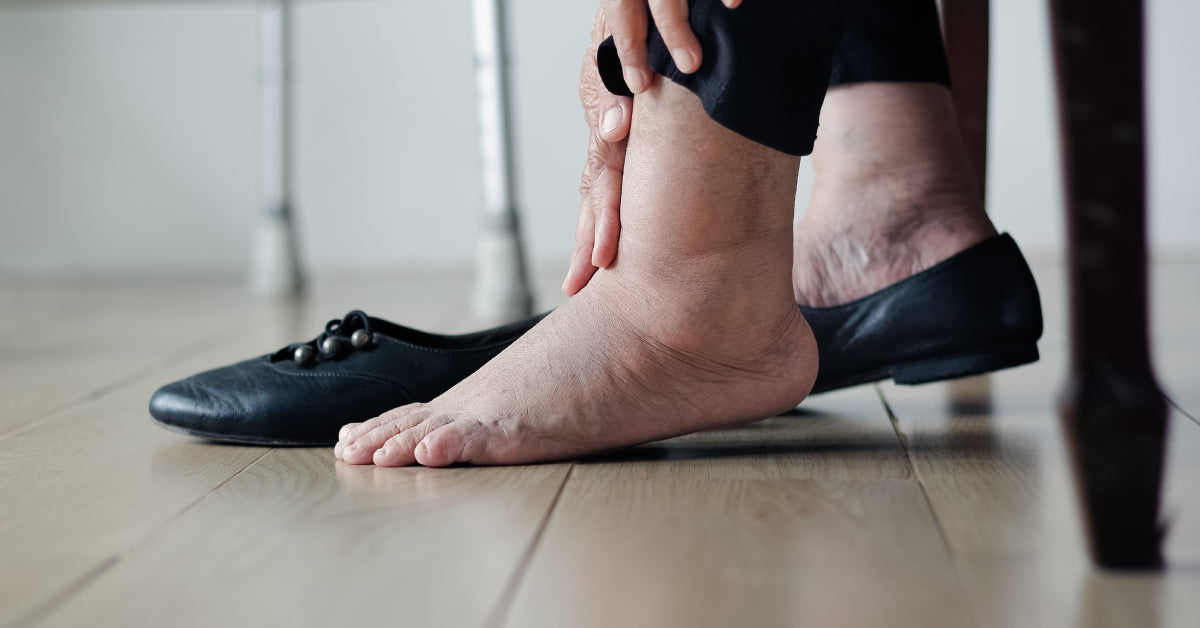by Freda Coetzee
Why do my Feet Swell?
Oedema happens when too much fluid builds up in the body tissues, mostly in the feet and ankles – causing them to swell up.
This often serves as a visible indicator of underlying issues related to blood circulation. Blood circulation plays a pivotal role in maintaining bodily functions, delivering oxygen and nutrients to tissues, and removing waste products.
A little physiology
Arteries carry fresh, oxygen-rich blood away from the heart to all parts of the body and veins bring used blood back to the heart. Tiny blood vessels called capillaries help exchange nutrients and waste between blood and tissues.
When disruptions occur within the circulatory system, such as impaired venous-return or increased capillary leakage, oedema can occur.
Symptoms of Oedema
Swelling or puffiness of the tissue right under the skin, especially in legs or arms.
Stretched or shiny skin, caused by fluid build-up.
Skin that holds a dimple, (also known as pitting,) after it’s been pressed for a few seconds.
Swelling of the belly, (the abdomen,) so that it’s bigger than usual.
Feeling of leg heaviness and tingling.
Impaired mobility in the feet and ankles due to the swelling.
Causes of Oedema
Oedema has different causes. To effectively treat this condition, it is necessary to find the root cause. Six causes are listed below:
One of the culprits is medication. Some medications treating high blood pressure can either directly cause oedema or lower potassium levels in the blood which causes water retention.
Minerals are essential for maintaining blood volume and fluid balance to decrease water retention.Potassium regulates sodium in the body and reduces water retention. Foods high in potassium include avocados, bananas, pistachios, spinach, kale, sweet potatoes, mushrooms, artichokes, fennel, Brussels sprouts, and arugula.”Magnesium helps transport calcium and potassium ions in and out of cells. It may also contribute to the absorption of these important minerals. This is why a lack of magnesium can lead to low calcium and potassium levels, and thus cause oedema.Taking 200 mg to 400 mg of magnesium a day may help reduce swelling.
Leaky Capillaries: Sometimes, things like inflammation, allergic reactions or injury can make the walls of our tiny blood vessels leaky, causing tissues to swell.
Weak Veins: If the valves in our veins don’t work well, blood can’t flow properly back to the heart. This can make blood pool in the legs and feet, causing swelling over the ankles and legs.
Organ Failure: When the heart can’t pump blood like it should, fluid can build up in the body, causing swelling in the legs and lungs. Kidney and liver diseases are also known to cause oedema.
Lymph Problems: Our lymphatic system helps drain extra fluid from tissues. If it’s not working right, fluid can build up, leading to swelling, especially in the arms and legs.
To treat oedema, it’s important to treat the underlying circulation issues. Efficient products are available to help with blood circulation, like Manna Blood Circulation support.
Can a Hot Environment cause Oedema?
It is not uncommon for the feet or hands to become swollen when a person sits or stands for a long time in a hot environment. This swelling is called heat oedema. Heat causes the blood vessels to expand (dilate), so body fluid moves into the hands or legs by gravity. If the hot weather is causing your swelling, there are several natural ways you can improve poor circulation, help return fluid to your blood vessels, and cool down your feet and ankles.
Put your feet up. It is one of the first things you should do to help diminish the swelling.
Stay out of the heat as much as possible. If you are disposed to swelling when it is hot, try to stay as cool as possible.
Sit in shaded areas or stay in air-conditioned rooms whenever possible.
Use a small fan to keep cool.
Apply a cooling foot spray.
Avoid overly hot baths, showers, and saunas.
At the end of a shower, blast your legs with a jet of cold water to boost circulation.
Foot gels like Manna Burning Feet Gel or oils like Peppermint oil are soothing to feet.
Does Exercise Help with Swelling?
Remain active! Although intense and excessive exercise can contribute to swelling in the lower limbs, calm exercise such as walking and swimming is good, as it helps to boost your circulation and release fluid buildup.
Does Fluid Intake Increase Swelling?
Not drinking enough water can make the concentration of salt in your blood rise, which makes your body retain the water you drink and cause swelling! The key is to stay hydrated. Aim for at least 8-10 glasses of plain water a day, and if that’s difficult to do, try adding slices of cucumber and lemon to it.
What about Sodium in Food?
Watch your diet. To reduce your risk of getting swollen feet and ankles, it’s best to look at a lower-sodium diet. Minimize foods high in salt, such as sauces, crisps, smoked meats, and soups. Avoid highly processed foods as these often have a high salt content.
In a Nutshell
Oedema happens when too much fluid builds up in tissues due to problems with blood circulation. Swelling occurs when fluid pools in the lower parts of the body, including the feet, legs, or hands, worsened by the effects of gravity. Fixing these circulation problems is key to treating oedema and reducing swelling.
What can I do to treat or prevent it?
Lifestyle and home remedies
Get regular exercise. Walking is a great way to help blood flow in the legs.
Manage weight. Losing excess kilos takes the pressure off the veins.
Use less salt. Eat a low-sodium diet.
Choose proper footwear. Adjustable shoes will put less pressure on your feet.
Don’t wear tight clothes around your waist.
Raise your legs. You should preferably elevate your feet/legs higher than your heart, about 3 or 4 times a day.
Change position often. Don’t sit still for hours.
Wearing special compression socks to help circulation.
Use a natural supplement like Manna Blood Circulation Support
What is Manna Blood Circulation Support?
Manna Blood Circulation Support is a natural supplement that formulated using the highest quality natural ingredients specifically designed to help promote better blood flow in a completely natural manner.
How does it work?
The ingredients in Manna Blood Circulation Support helps release nitric oxide to increases micro-capillary blood flow. May also decrease unwanted blood lipid levels and dissolve lipid deposits in arteries.
The different ingredients work in a holistic manner to assist in positive blood flow.
Benefits of Manna Blood Circulation Support
Supports cardiovascular health by boosting nitric oxide production and helping blood flow more easily throughout the body.
Supports healthy blood pressure and boost the immune system.
Detoxifies the liver and eliminate ammonia from the body.
Improves sexual stamina and enhance recovery from an intense workout.


















